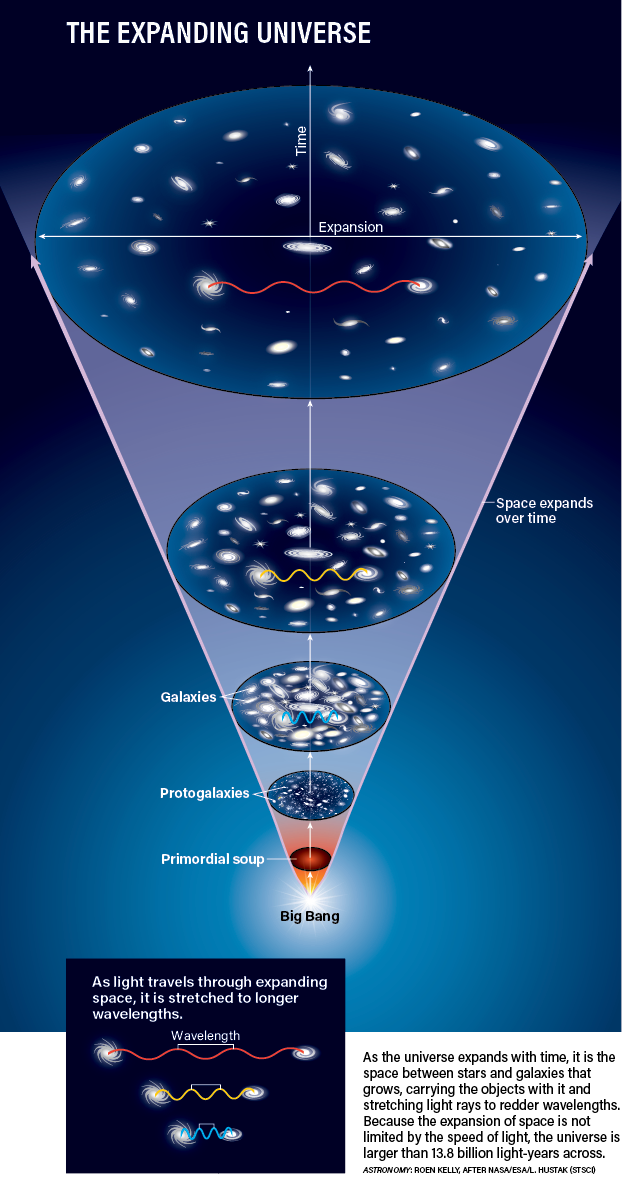
How can the visible universe be 46 billion light-years in radius when the universe is only 13.8 billion years old? And how can we detect light 46 billion light-years away when the universe has been in existence for a fraction of that time?
Joe Murchison
Placerville, California
Astronomers widely accept that the universe formed in the Big Bang approximately 13.8 billion years ago. It has been expanding ever since. This expansion explains how a 13.8-billion-year-old universe can be so much larger than 13.8 billion light-years across.
First of all, we should explain that the light-speed limit that relativity imposes on objects within the universe doesn’t apply to the universe itself. In fact, we can’t refer to an absolute expansion speed of the universe because we can’t measure it in reference to anything external. We can only gauge the “speeds” of distant galaxies that are receding from us relative to our own position. Apart from those that are gravitationally bound (such as, say, the Milky Way and Andromeda galaxies), all galaxies appear to be moving away from each other as the space-time in which they’re embedded expands. The more distant the galaxy, the faster its recession velocity, as noted by the Hubble Law. As a consequence of this expansion, a galaxy’s location changes considerably during the period of time that its light requires to travel to us.
Let’s couch this in human terms: You are tossing a ball to a friend from a set distance, say 50 feet (15 meters). Provided both of you remain stationary (and you aim properly), the ball’s 50-foot path will always equal the distance that separates you and your friend. But now let’s assume that instead of remaining in place, you back away 10 feet (3 m) each time you toss the ball. In that case, by the time the ball reaches your friend, its travel distance will be less than the distance that now separates the two of you.
In the same way, the light we’re seeing from an object 13 billion light-years away required 13 billion years to move from it to us, but during that period, the amount of space separating us from that object has increased substantially. Calculations show that this expansion would cause the current radius of the universe to be about 46 billion light-years.
Edward Herrick-Gleason
Planetarium Director, Southworth Planetarium,
University of Southern Maine, Portland, Maine









